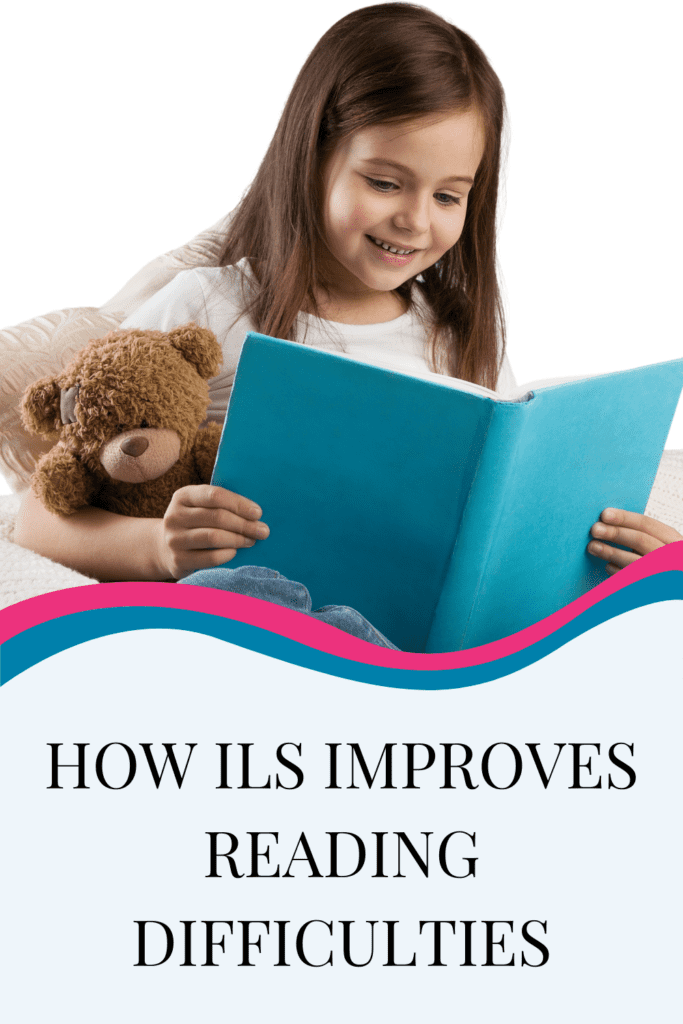Let me tell you about a client, Nick. When he first started my program, his parents were certain he would need additional reading therapy on top of addressing behaviours related to autism spectrum. They said, “let’s do iLs first to address behaviour and processing and we’ll deal with reading afterwards.”
Yet in those next few months, something amazing happened! Not only did iLs improve Nick’s processing, his behaviour, ability to focus and even his speech–it also improved his reading. It improved his reading so much so that he was no longer stuck at the same reading level. His brain was now able to learn to read and at school he was suddenly moving up through the reading levels like all the other kids. His parents didn’t even have to do reading therapy because of the changes that iLs created.
Below is a description from the iLs website on how iLs impacts the processes that are responsible for reading.
AUDITORY TRAINING
The adage “we read with our ears” holds much truth, but is often ignored in reading programs. Decoding and phonemic awareness require efficient processing and storage of auditory information. iLs trains the auditory channel for efficiency and accuracy through repeated listening and movement sessions. The goal is to activate the relevant neuronal connections and ultimately train the ear and the brain to analyze and process language frequencies simultaneous to movement (replicating daily life where our visual and auditory systems are expected to be simultaneously functional).
VISUAL TRAINING
The subcortical visual motor system has direct neural connections to the auditory and vestibular systems. All three of these systems must work together for proper balance, coordination, reading and sound localization. iLs programs activate these systems with visual tracking and visual perception exercises; in fact, ocular motor improvement ranks as one of the consistently strongest areas of change resulting from iLs programs.
ATTENTION & FOCUS
Brain scans of ADHD individuals show the cortex as being hypo- or under-active, particularly in the frontal and temporal lobes. This suggests that the cortex is the source of the problem, which is not necessarily the case. In fact, the cortical (higher brain) function in ADHD individuals is usually normal. The problem is that there is insufficient input getting to the cortex. Higher brain functions such as reading are dependent upon adequate input from the brain stem and cerebellum. iLs’ combined sound/movement approach stimulates sub-cortical activity, improving the ability of brain stem and cerebellum to process sensory information leading to the cortex.
PROCESSING INFORMATION, LEARNING NEW TASKS
The cerebellum is 10% of the weight of the brain, but it has 50% of the brain’s neurons. In computer terms, the cerebellum is the processor, receiving input from sensory systems and various parts of the brain, and integrating these inputs to fine tune motor activity. Neuroscientists agree that the cerebellum is involved in motor functions, cognitive functions such as attention and emotional functions such as regulating fear and pleasure responses. The iLs Playbook’s repetitive activities are designed to stimulate cerebellar function. Inputs from the visual, vestibular and auditory systems, session after session, train the cerebellum to become efficient at processing multi-sensory information.
EMOTIONAL REGULATION, BODY AWARENESS
Directly connected to the cochlea of the inner ear, the vestibular system is primarily responsible for balance and coordination, but also has a strong impact on sensory modulation and emotional regulation. Once the vestibular system is functioning well, children are better able to participate in higher brain functions such as reading, writing and expressive language. iLs provides specific and comprehensive stimulation to the vestibular system through bone conduction delivered via headphones, balance board activities, and body movement exercises.
SENSE OF CALM, “GROUNDED”
The autonomic nervous system (ANS) controls many organs and muscles that work in an involuntary, reflexive manner. The ANS is important in 2 situations: emergencies that require us to “fight” or to take “flight” (the sympathetic SNS) and non-emergencies that allow us to “rest and digest” (the parasympathetic PNS). Many children and adults beginning iLs programs are in a state of hyper-arousal, not far from “fight or flight”. The gentle stimulation of the PNS brings about a balance of the ANS which is reflected by increased calm and self-regulation, allowing one to focus more effectively on language, learning and other cognitive tasks.
HEMISPHERIC INTEGRATION
The brain defies categorization of function into neatly organized compartments but rather utilizes multiple areas simultaneously for any one function – reading being a good example. Brain areas from front to back and from left to right are simultaneously involved in this activity. This requires precise, rapid and clear communication within and between hemispheres. The strength of the connection between hemispheres is enhanced through the duration of the listening and the repetitive exercises from the iLs Playbook.
ALERTNESS, ATTENTION, AND A GOOD NIGHT’S SLEEP
The Reticular Activating System (RAS) is a network of neurons deep in the brainstem that receives input from all sensory systems. It sends nonspecific information to the brain to “wake it up”. It is involved with regulating arousal and sleep-wake transitions, alertness, appropriate arousal to attend to the task at hand, and even prepares the motor system for action. Clinical evidence shows that iLs multi-sensory training consistently improves arousal level as well as sleep patterns
